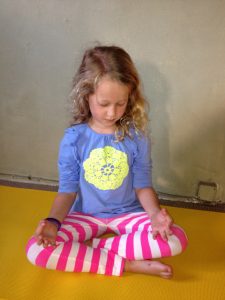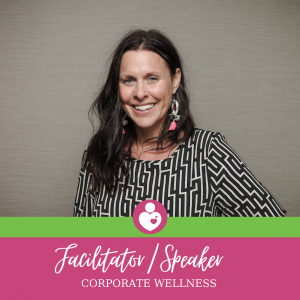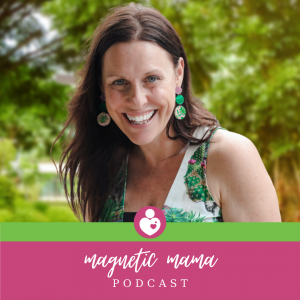Children are born doing yoga.
Babies can go into a meditative state when calm, and as they grow they grab their toes and find liberation performing downward dog.
Children are pure, radiant and full of innate wisdom. Children learn best from their own experiences and from each other by using their imagination. Their curious, intuitive nature makes them the perfect yogi.
Children need to play, exercise, rest, express themselves, shout and release stress. This makes a children’s yoga class very different from an adult class. It is high energy, vocal and full of creativity. The use of stories, themes and games captures the children’s open minds. But during a class, even though it is active, students have plenty of opportunity to rest and breathe together. In child’s pose, for example, they can be a mouse, a rock, an egg or a seed, and we use this time to recoup their energy and reconnect.
The beauty of yoga is that it is totally inclusive – any child can take part. It is not dependent on a skill level, physical size or strength; it is not based on good hand-to-eye coordination; it does not rely on special equipment or large spaces.
Children learn best using their imagination.
More than just good fun
Yoga allows children to have fun in a supportive environment while, behind the scenes, all kinds of development is being helped along. Strength, coordination, body awareness, concentration, focus, confidence, social and emotional intelligence and emotional control all flourish. Yoga also benefits creativity, compassion, respect, generosity, self-love and self-acceptance.
Encouraging mental strength and flexibility
By weaving together imagination with relaxation and visualisation, yoga creates a special experience for children.
Through yoga, children are able to learn how to relax, which assists listening skills and makes for better academic and artistic performances. Creating mental images during meditation can help with reading and writing skills.
Yoga teaches children to remain present, instead of thinking about what might be happening next. It teaches children about their feelings and emotions so they can have better relationships.
Yoga leaves children feeling happy and content.
Yoga is non-competitive and any child can do it.
Ring for a hug bell.
Use a bell that your kids can ring whenever they want a hug from you. If you are feeling stressed then ring the bell and child will soothe you with a heart melting cuddle.
Time to reflect …..
Teaching children yoga is an uplifting experience that nourishes my soul because their energy is infectious. Children teach us so much about life because they see it from a beginner’s mind. When I am reading my son Lael a story and I forget a word or miss a page, he always corrects me because he lives in the present moment. He also always remembers where I have parked my car, which is very helpful.
Of course, sometimes children do not listen and are disruptive, and the class plan is that there is no class plan. This is so especially if it has been raining for days and the children have not been outside, or when there is a full moon. At times like this their energy can be frantic but it has taught me to go with the flow and be spontaneous and creative.
If the children need to run around and let out their pent-up energy, then the class will reflect this. If they are tired but wired, we play a high-energy game, like musical yoga statues, and then have a longer relaxation.
Children lead the class with their intuitive and curious nature. Children also share their feelings in this environment. I am their yoga teacher, not their school teacher or parent. They are able to be open and discuss how they are feeling, which creates a beautiful relationship between teacher and student.
Mind your mindful moment today ….
– Write some positive affirmations
– Make up a story using some yoga poses you know
– Put in some music and dance like no-one is watching
– Play the farmer and seed game
– Make some yoga cards
– Do some fun family yoga












